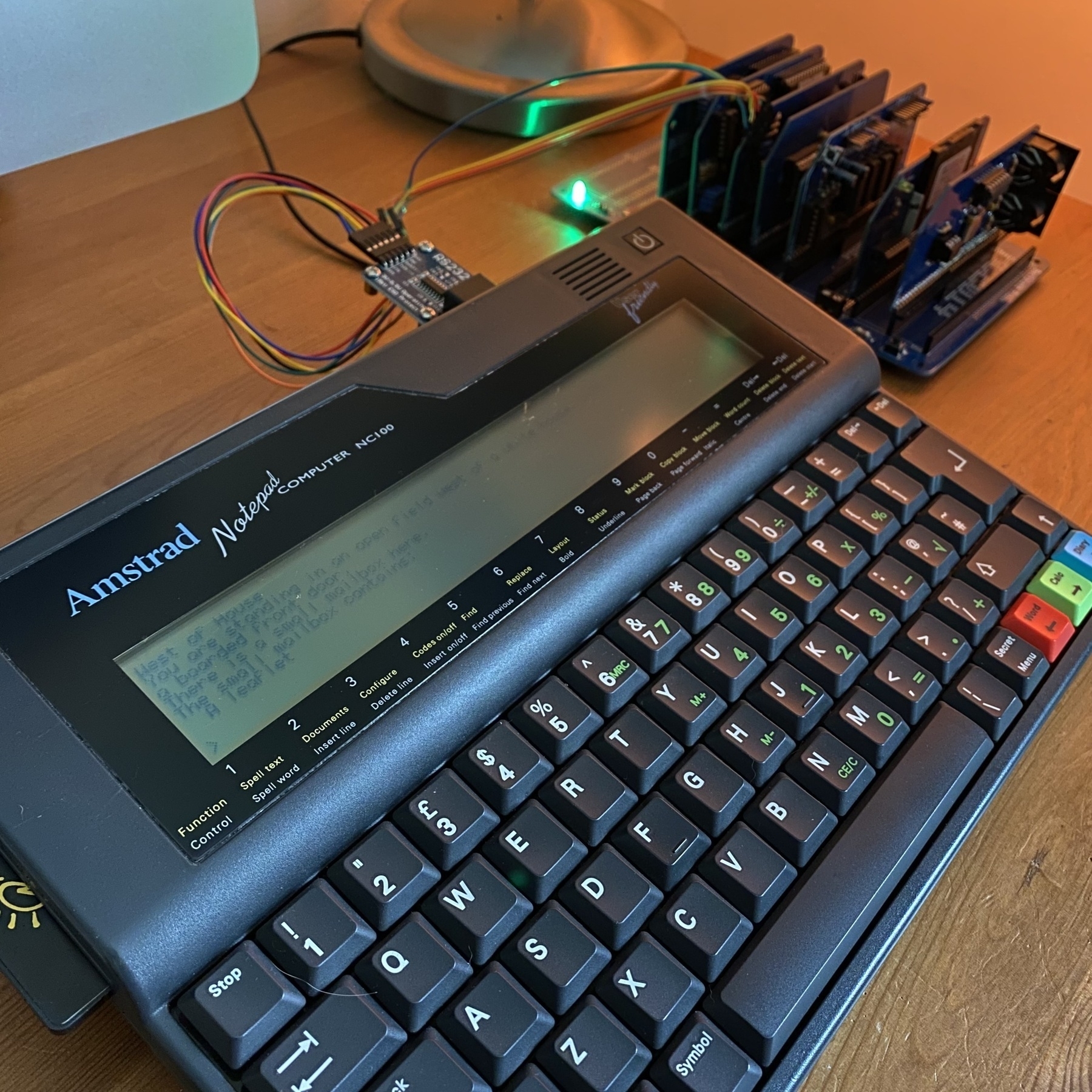Fun with MIDI!
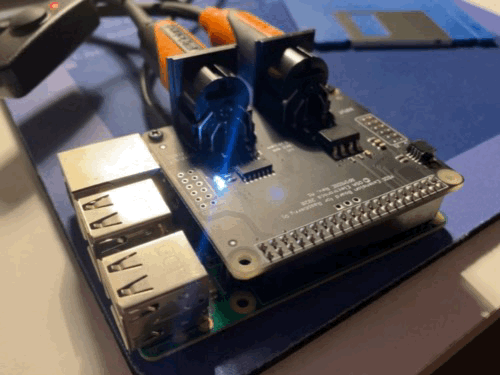
Fun with MIDI!

The Micro Enquirer (Spectrum)

I am on my holidays.

I’m working on my (second ever!) ROM hack this weekend and a random glitch has given me an idea…
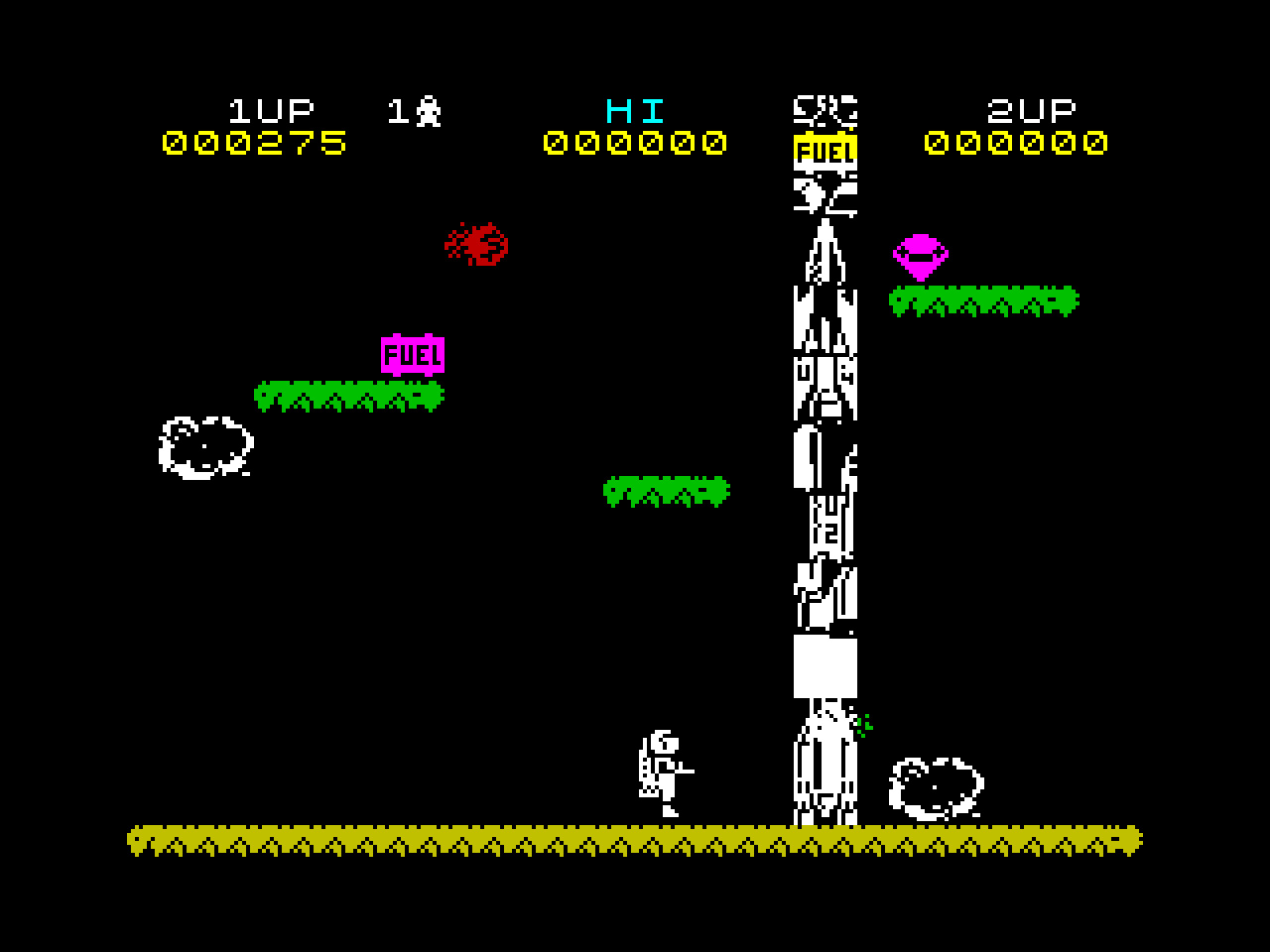
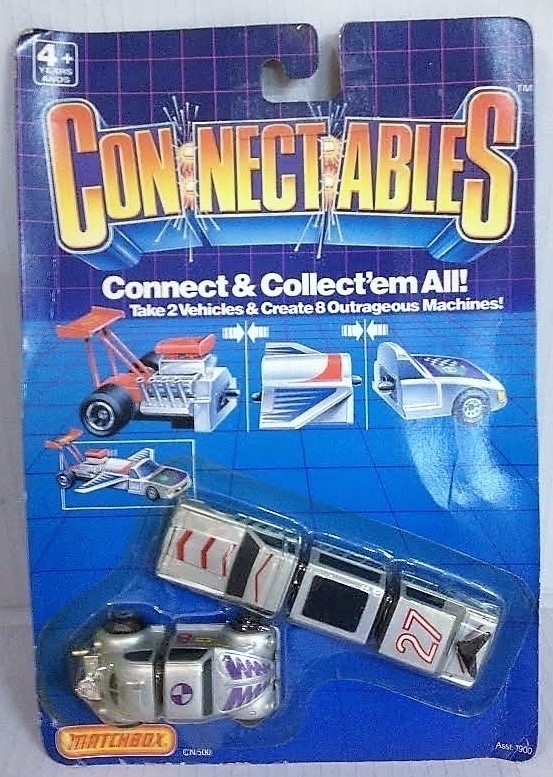
Work in progress! (This photo didn’t attach to the previous post for some reason). I’d had the thing open years ago to service the belt or something but the old brittle wires gave way and it took some effort to deduce what goes where! It languished in the garage for ages; being raided for parts a couple of times, but I decided to give it another go last night. I couldn’t find a schematic for the whole unit, but the data sheet for the LA4160 amplifier IC was very helpful.
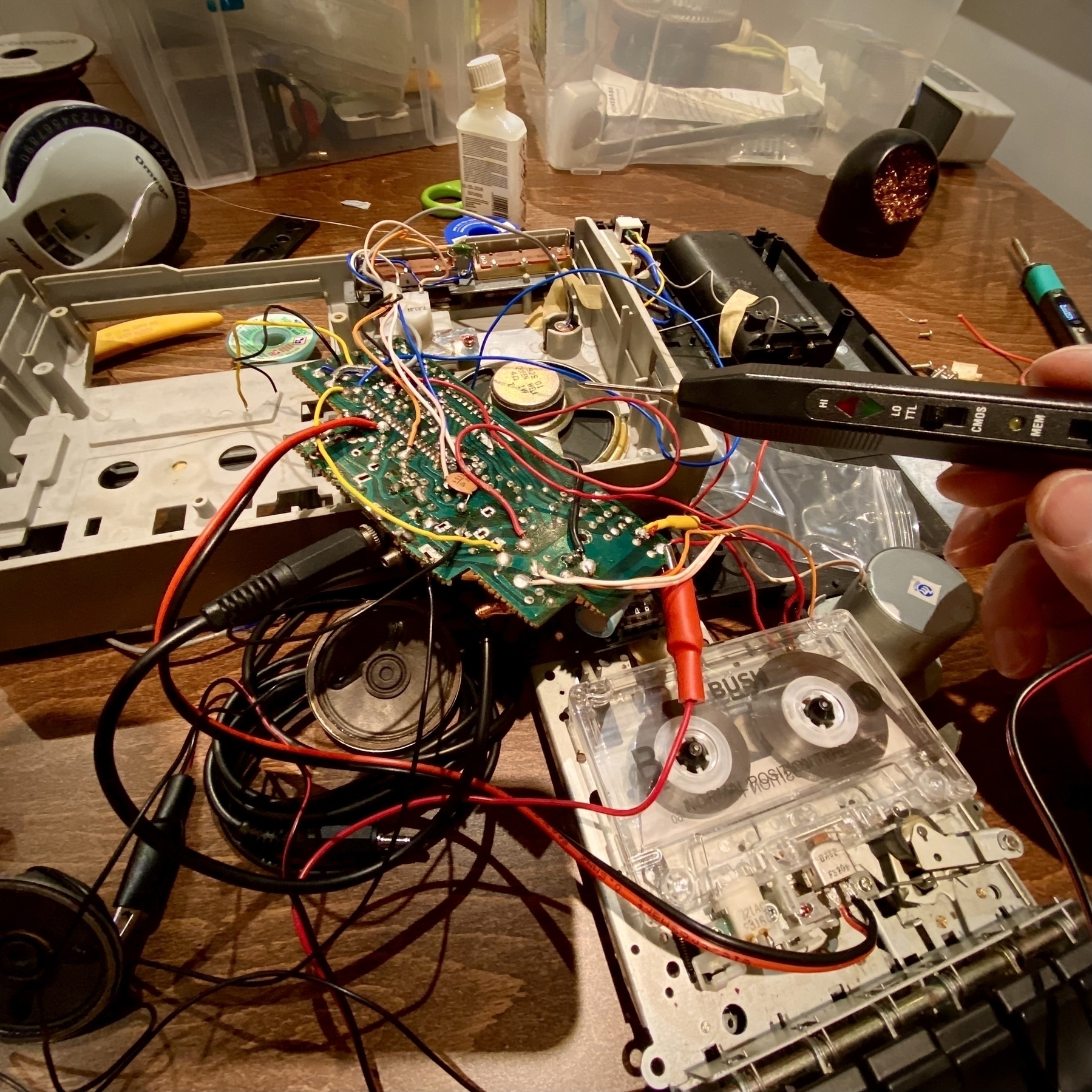
Fixed it! I had to improvise an output socket—I harvested the original one when I thought this player was beyond repair, but this was my childhood Spectrum cassette recorder so I made the effort to fix it. #HiFi #ZXSpectrum
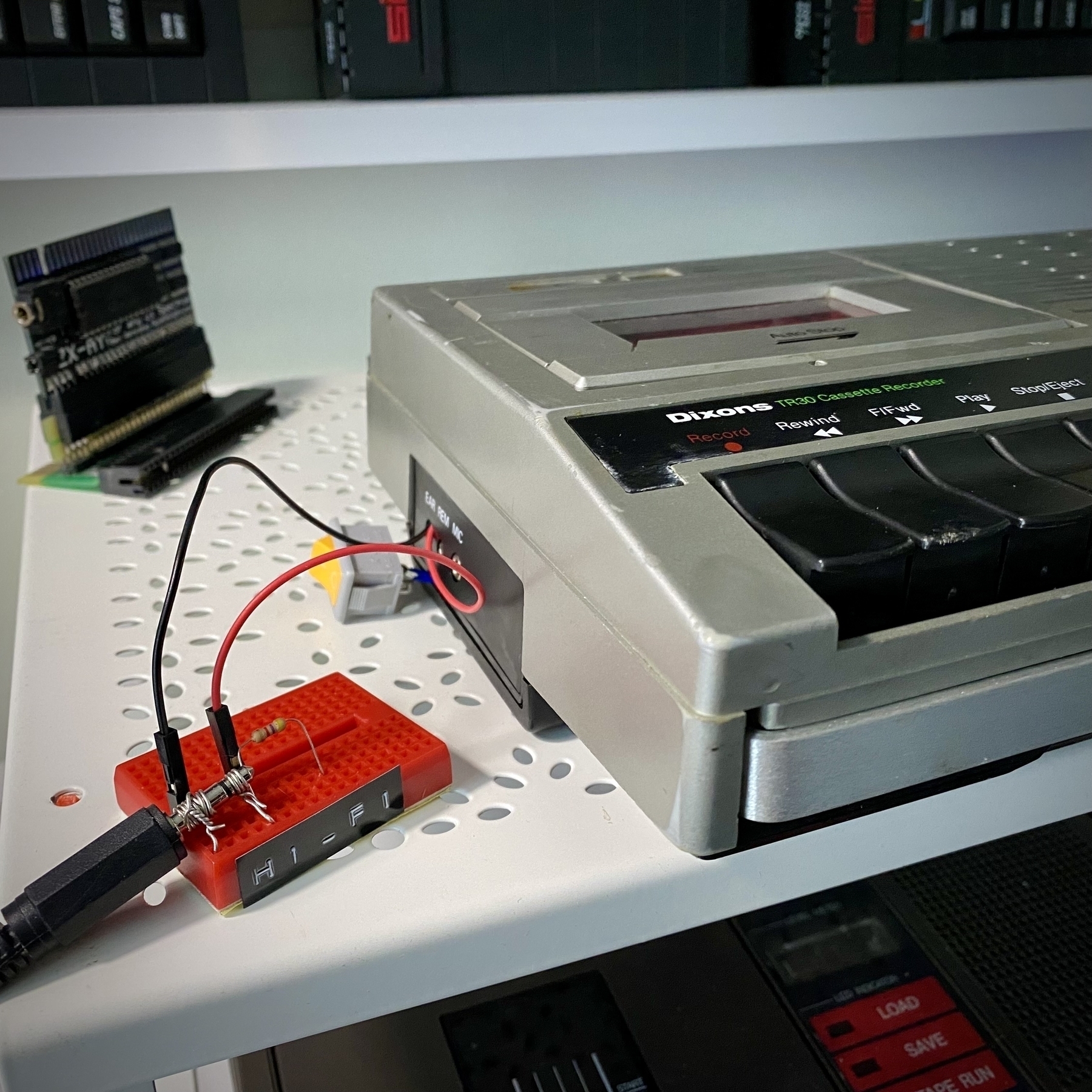
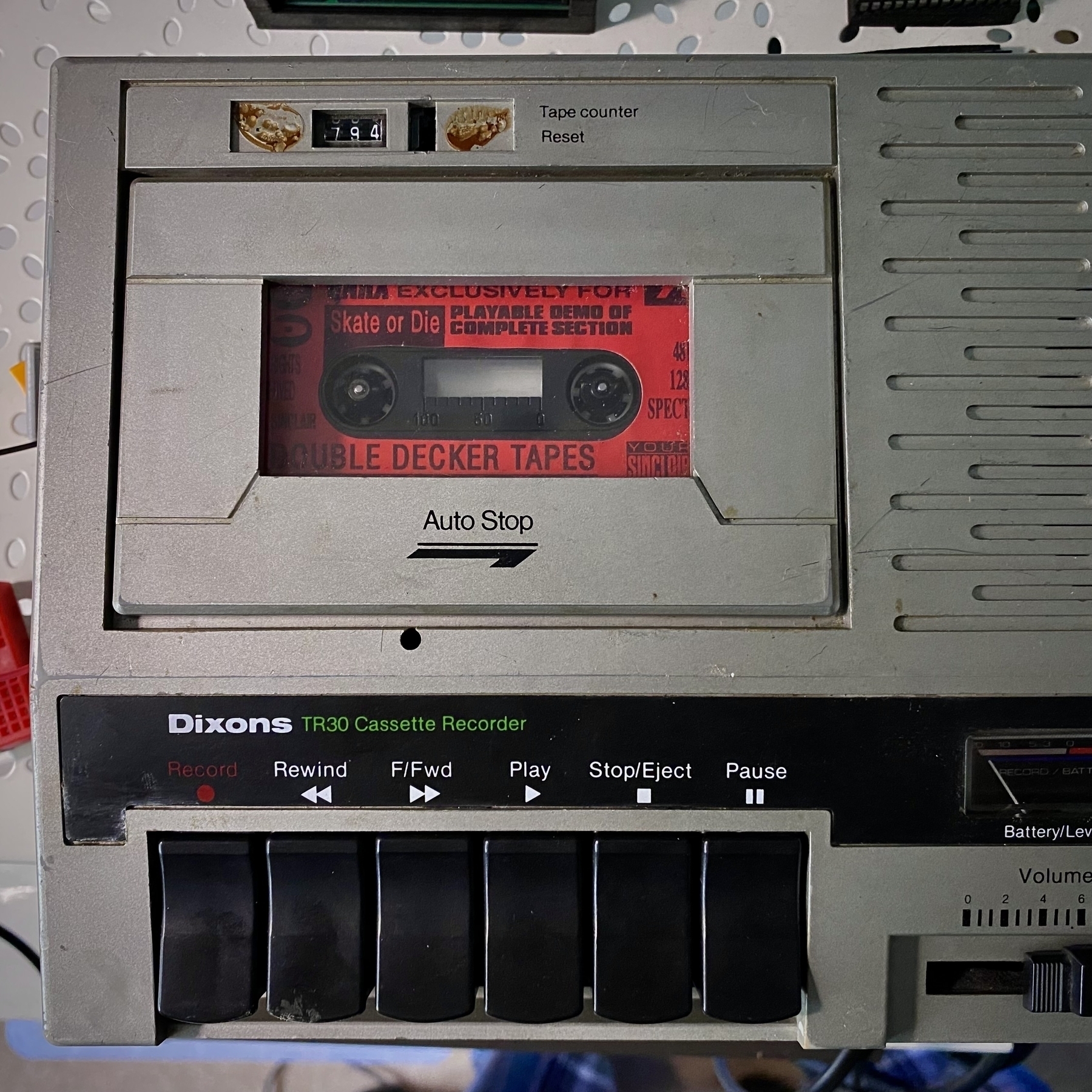
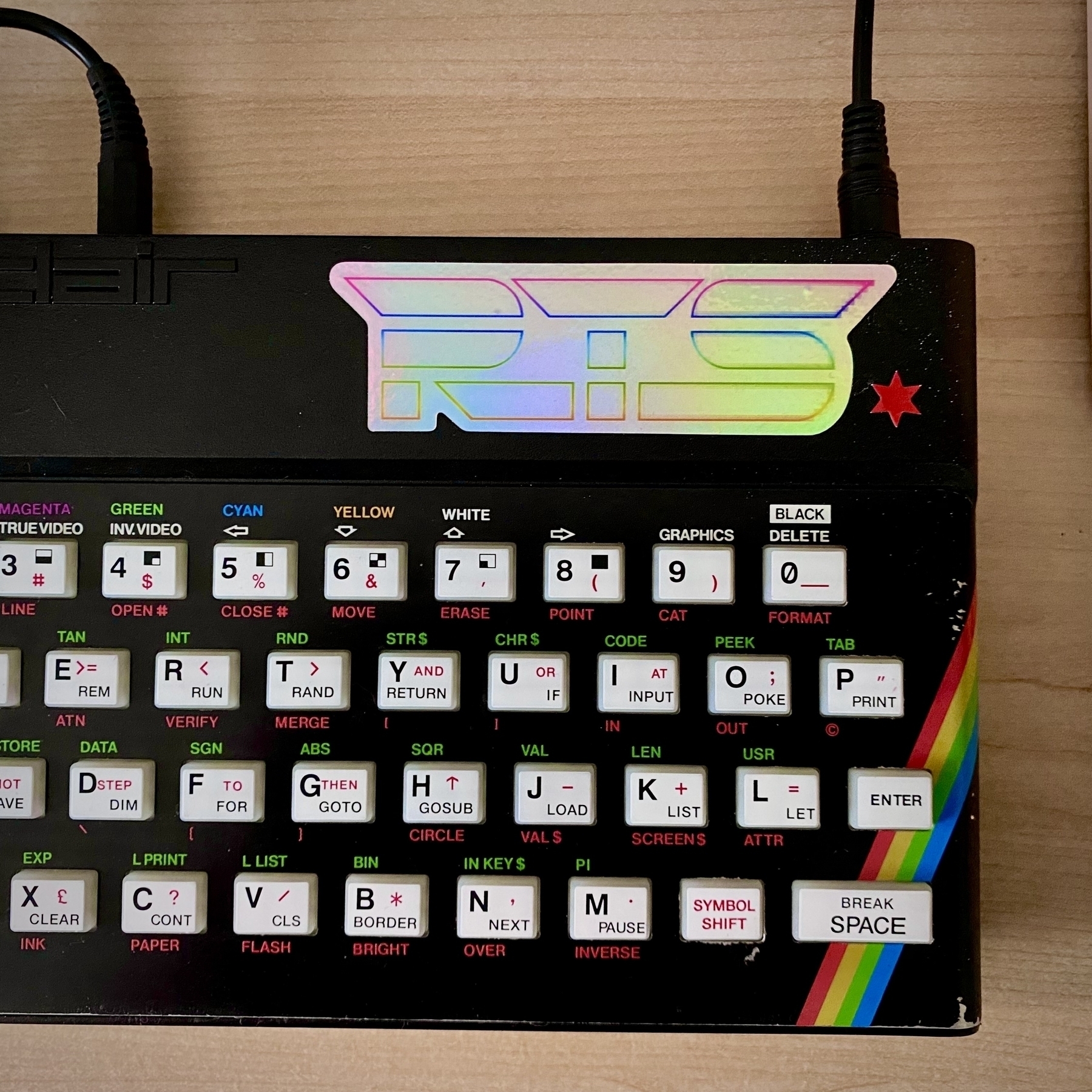
Midnight maths club
Tonight we’re learning (or really just enjoying looking-at) bifurcation diagrams generated by Feigenbaum constants (…and very slowly plotted on a ZX Spectrum!)
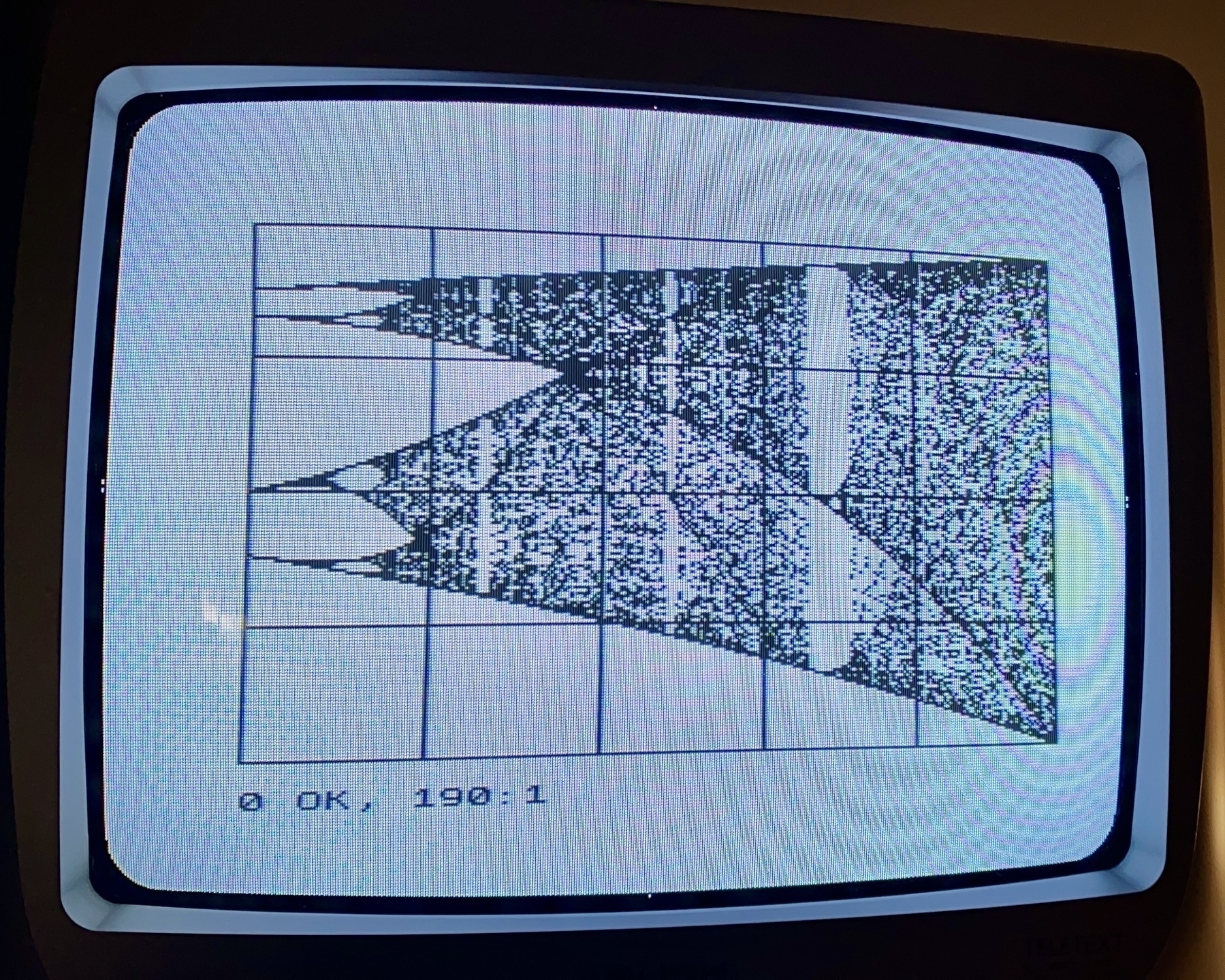
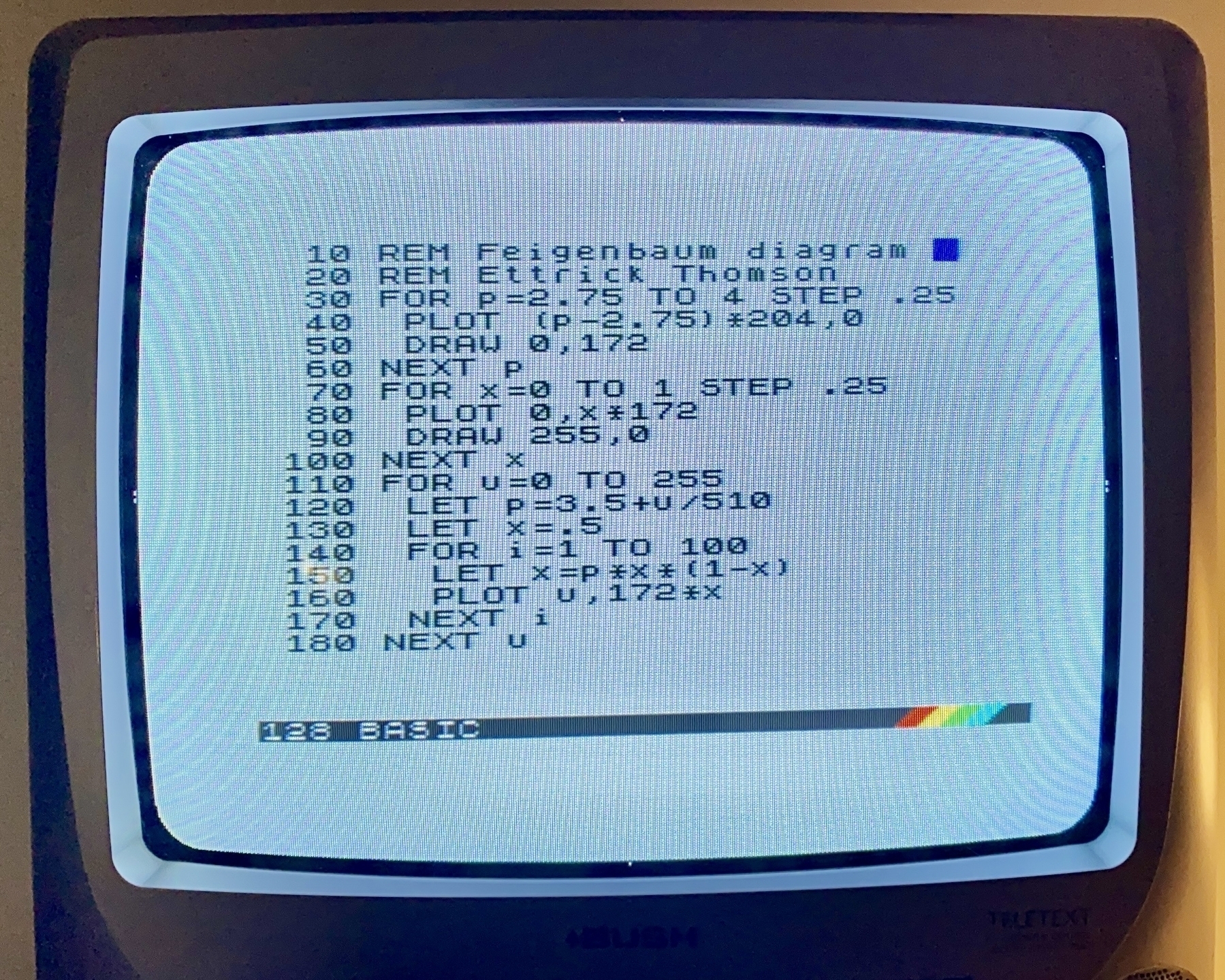
I had a great time at the Acorn Computers User Group meet-up last night in Falkirk. I was notionally representing SAM Coupé, but I spent almost the entire time learning about Elks, Masters, and RISC OS machines (and much more!) More pics at Spectrum Computing forum.
📷 Tosk / Retro Rendezvous
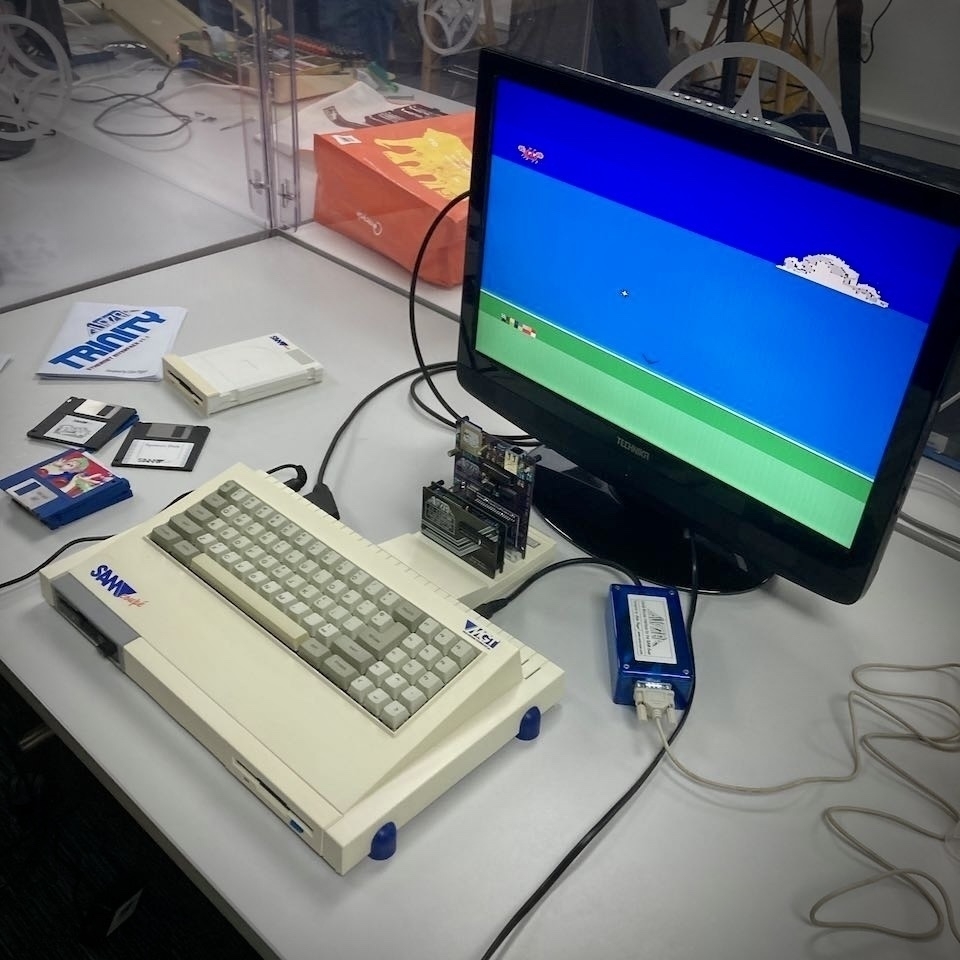
“The marvellous thing about a singing horse is not that it sings well but that it can sing at all. To accomplish speech synthesis on a Spectrum with no additional hardware is a marvel of a similar order”.
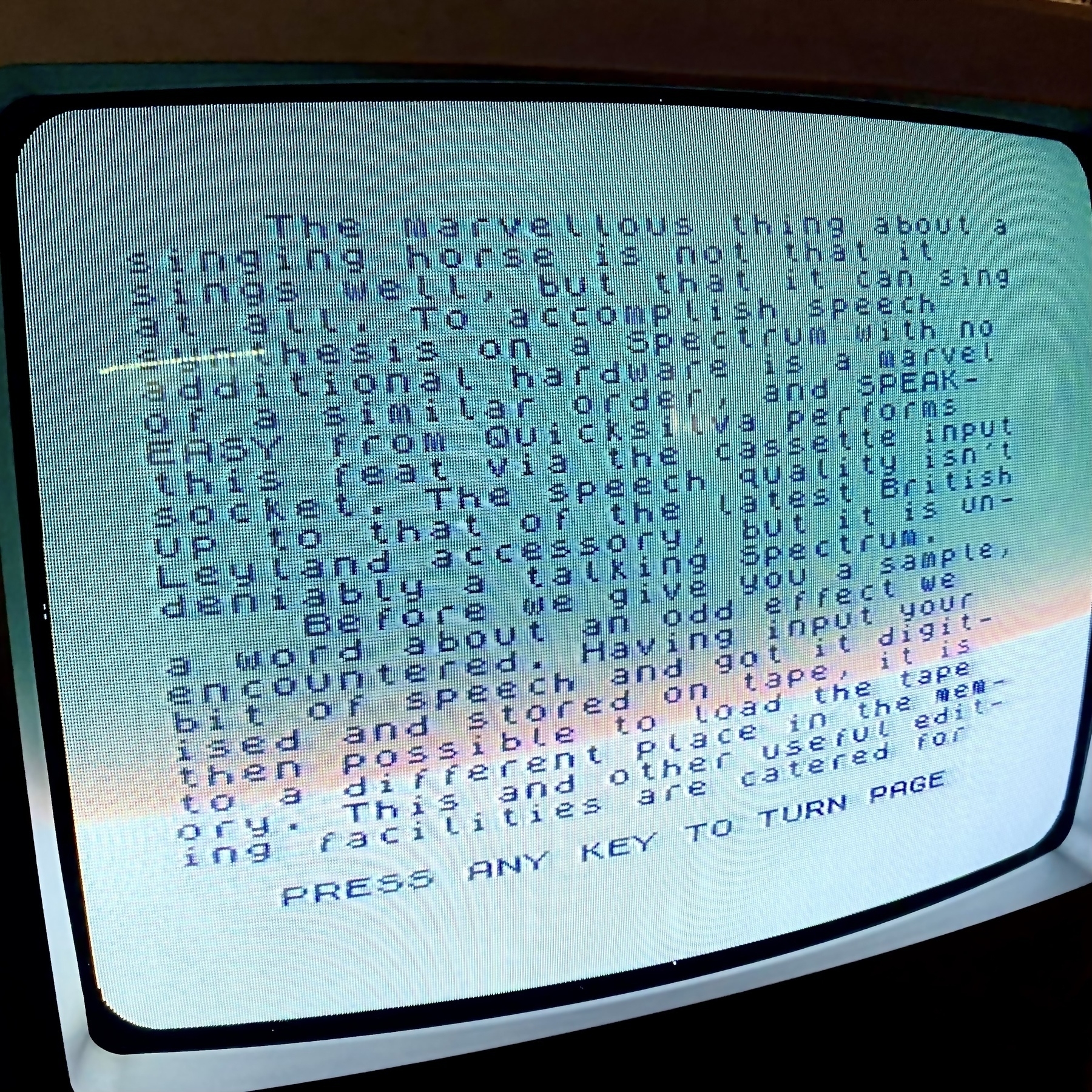

ZX Spectrum PlusD (clone) disk interface. The last of the parts arrived today so I blew the EPROM and programmed the GALs. And it worked!
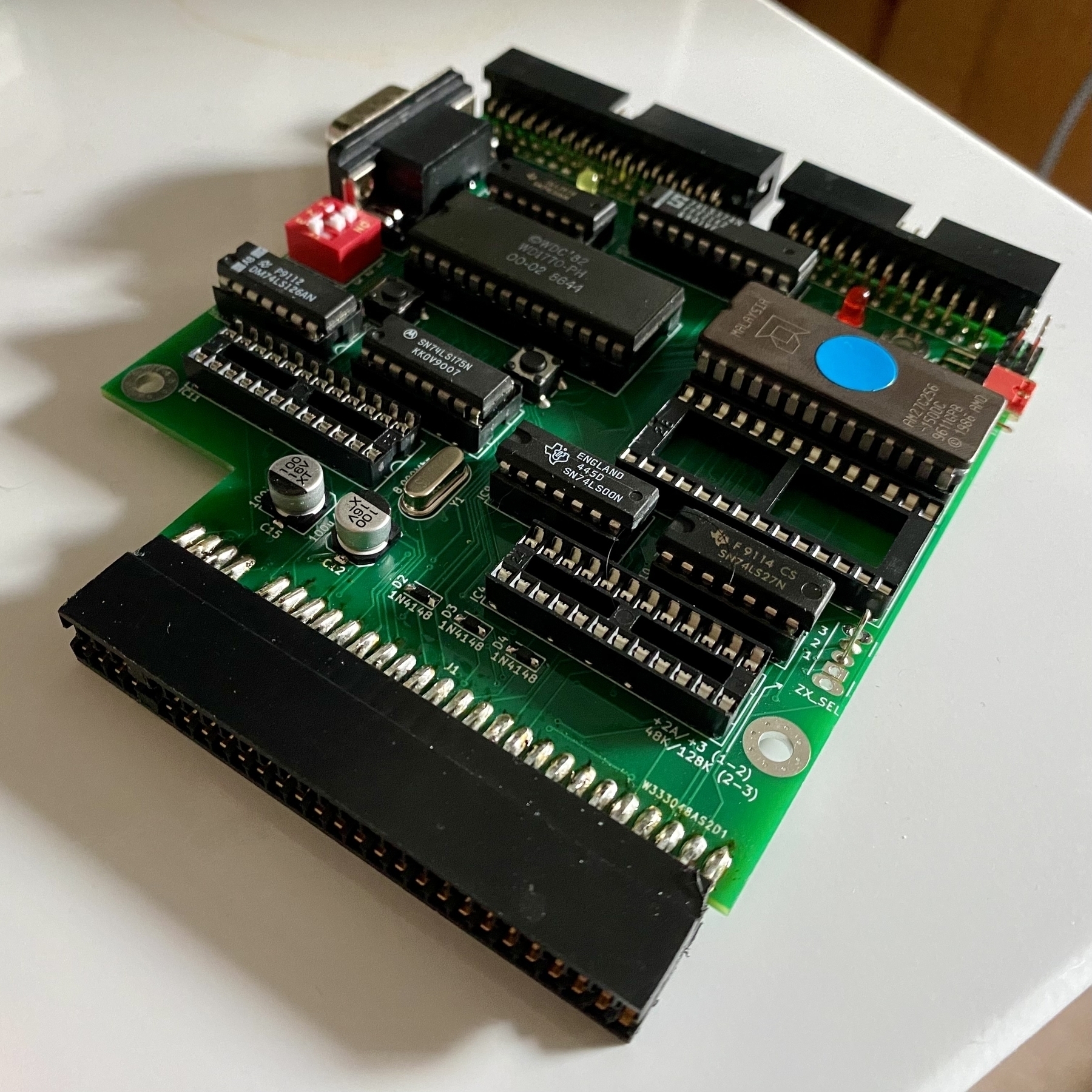

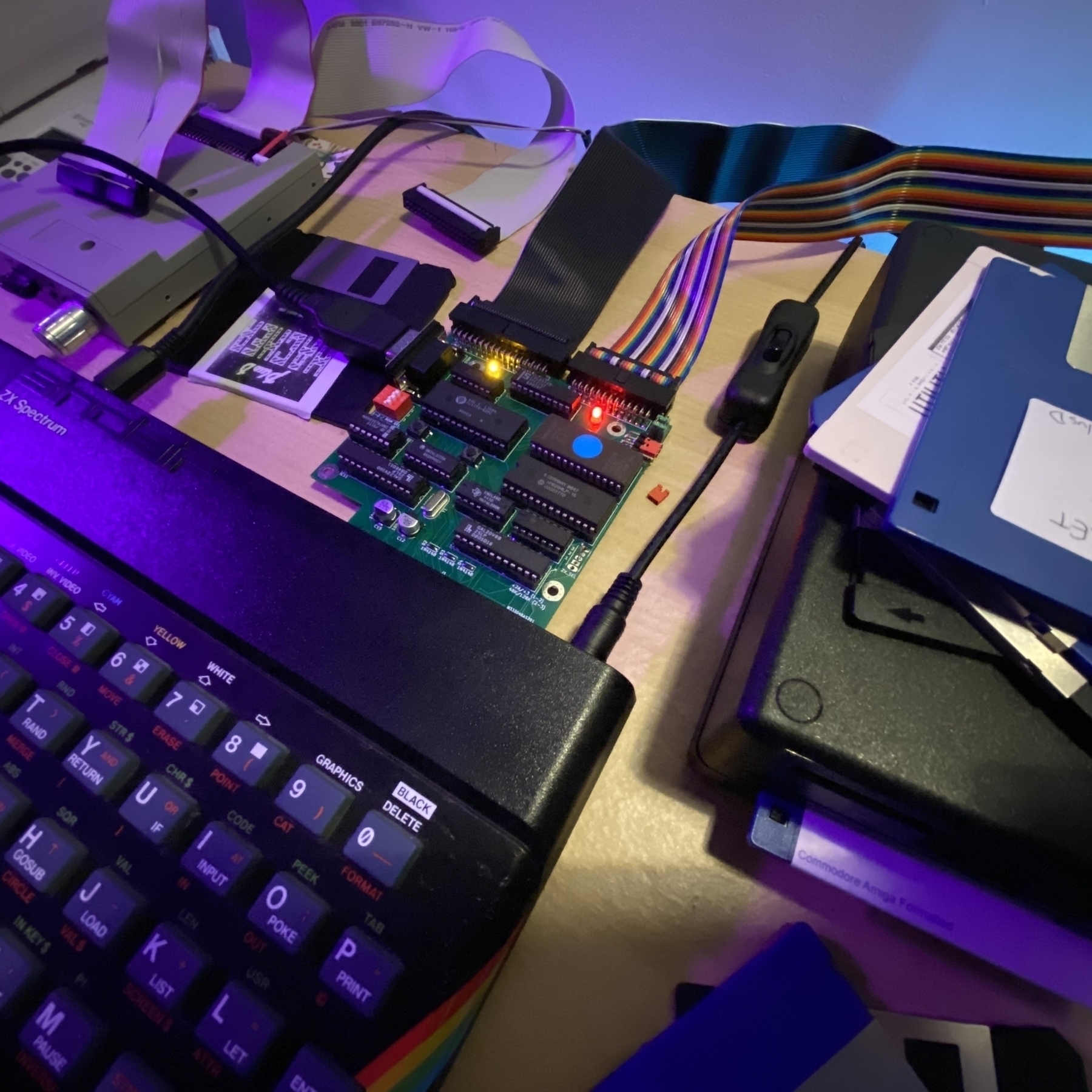
Tell you what, going back to 1206 SMT components after working with 0805 scale devices is like moving paving slabs around. (Strawberry Chuppa Chupp for scale)
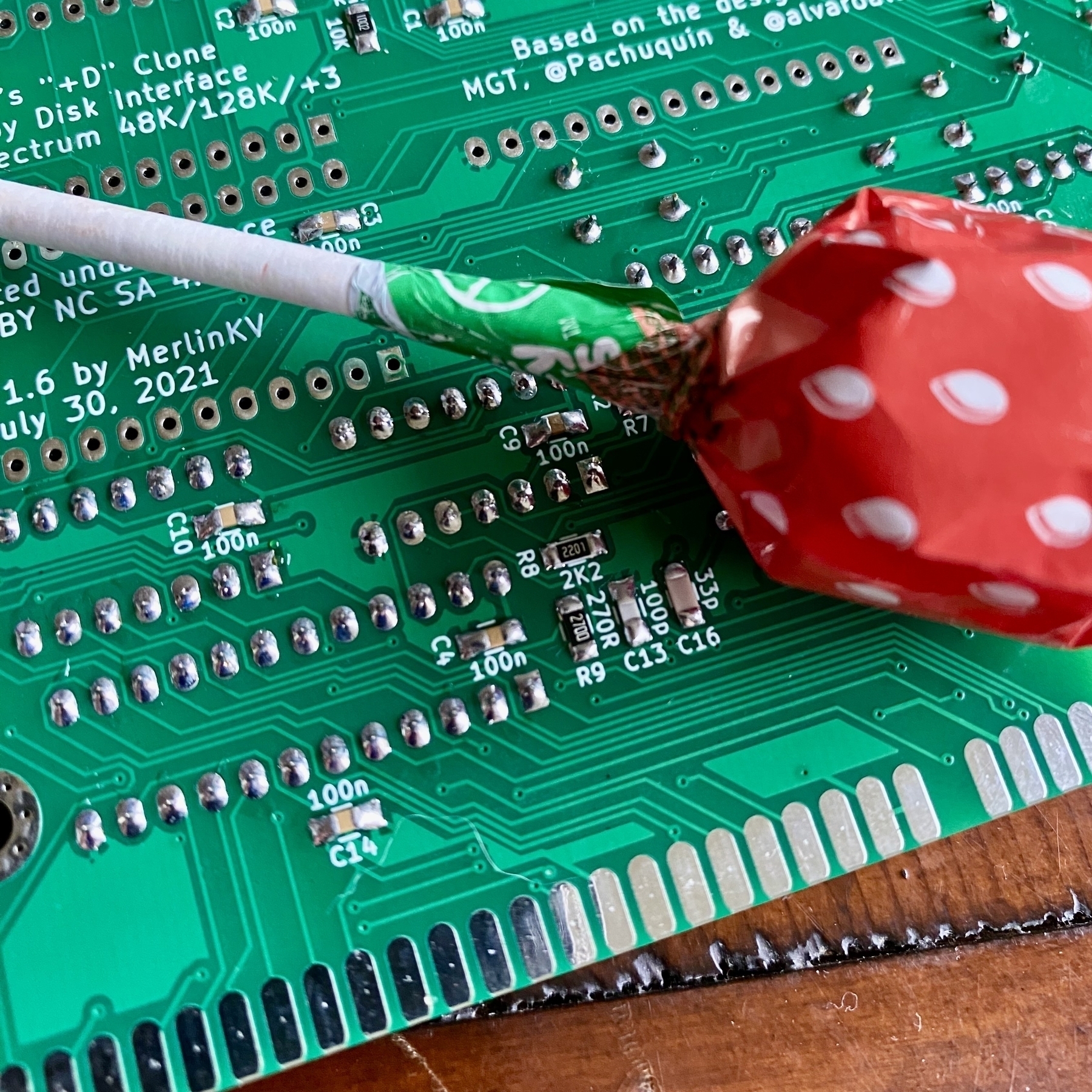
Well. Time to learn how to blow a GAL. 👨🏻🏭
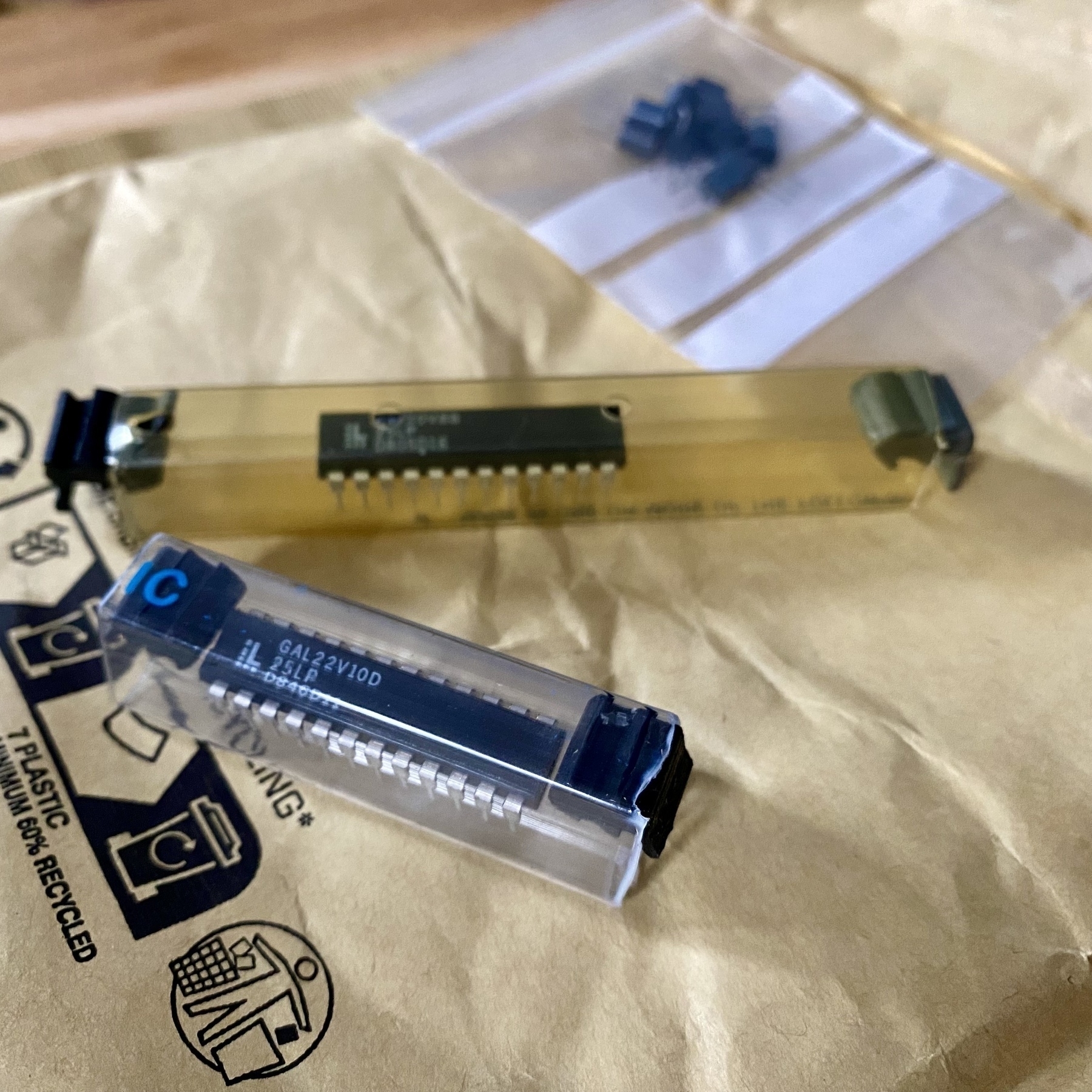
I thought something was wrong with my PlusD disk interface so I took it apart for inspection… and who would’ve guessed it, the problem was just a duff floppy disk! 😩🥴😛💾💾💾
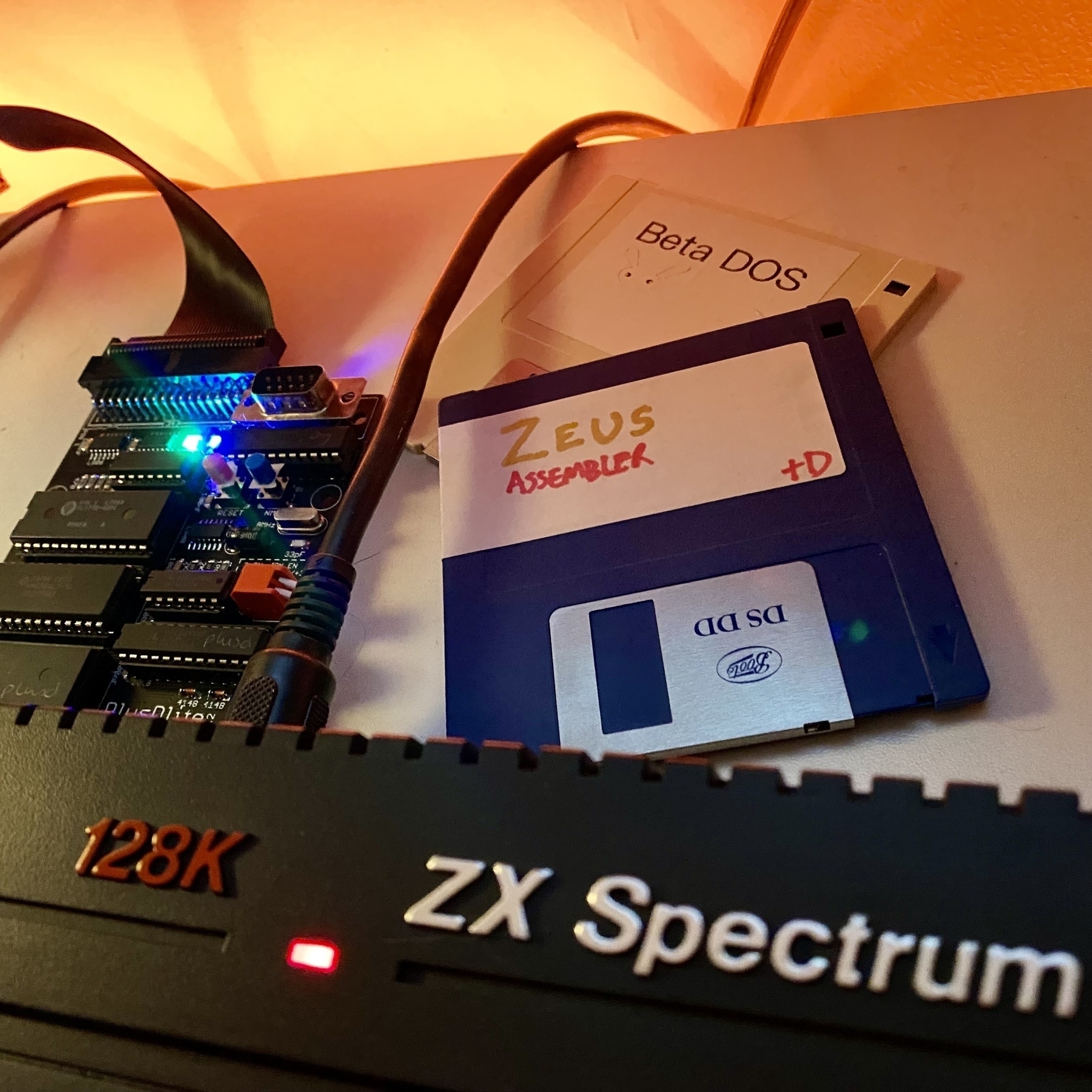
It’s never given me any trouble to be honest, it’s easily one of my favourite Spectrum accessories.
(I’ve no idea why I didn’t immediately suspect the well-used second-hand disk I got in a job lot from eBay!)
I quite often replay the original Tomb Raider around Christmas time, but I really associate it with the new year. Anyway this year I was looking up some of the secrets I’ve never found, and discovered a bug(?) in the PAL version: the third secret in The Cistern is inaccessible!



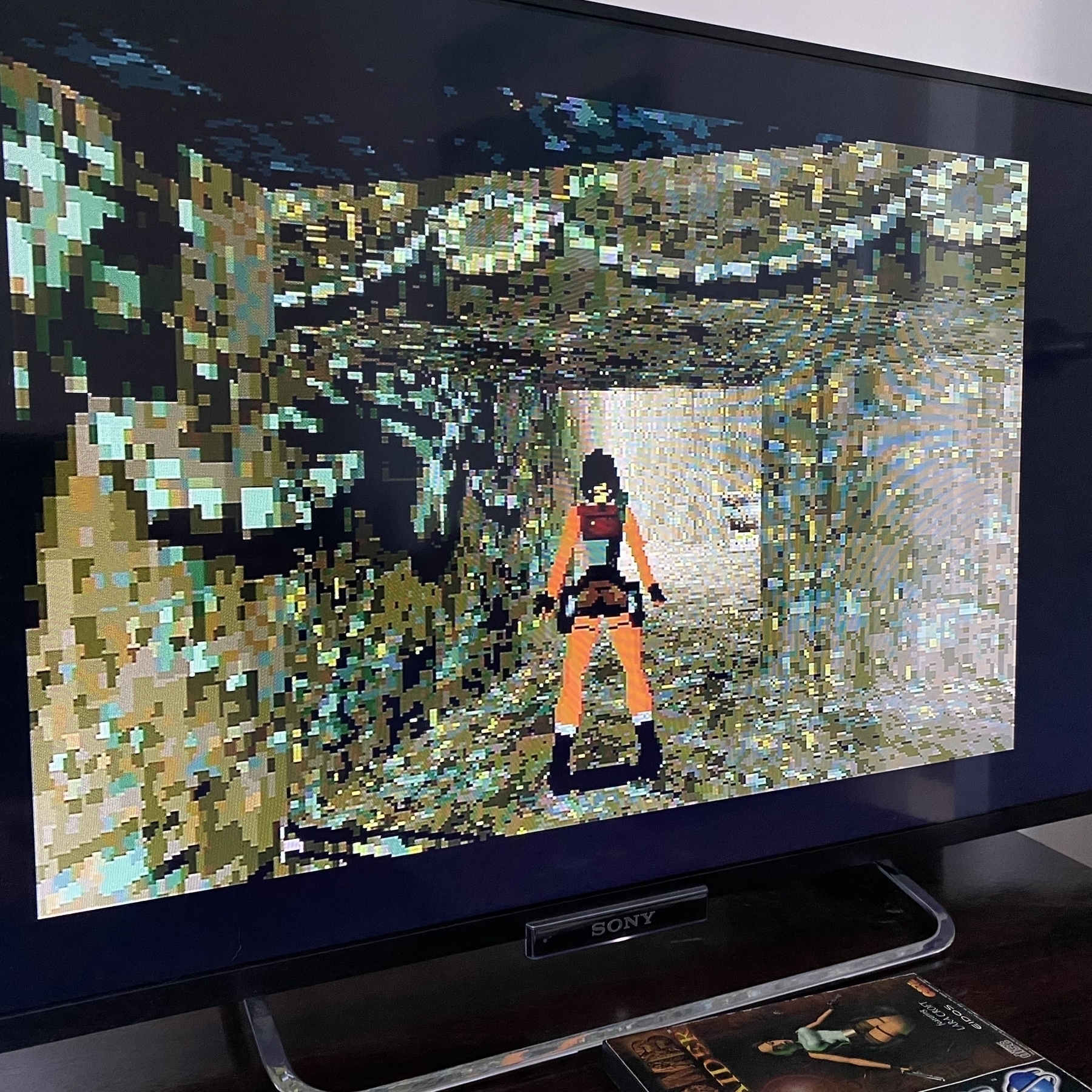
Well it might be the twelfth night but it’s not too late to post about my ADVANCED CHRISTMAS JUMPER SIMULATOR for ZX Spectrum. And do check out the rest of the latest W00t! tapemag for loads more laughs and games.

Moley Christmas, dudes. Cowabunga.
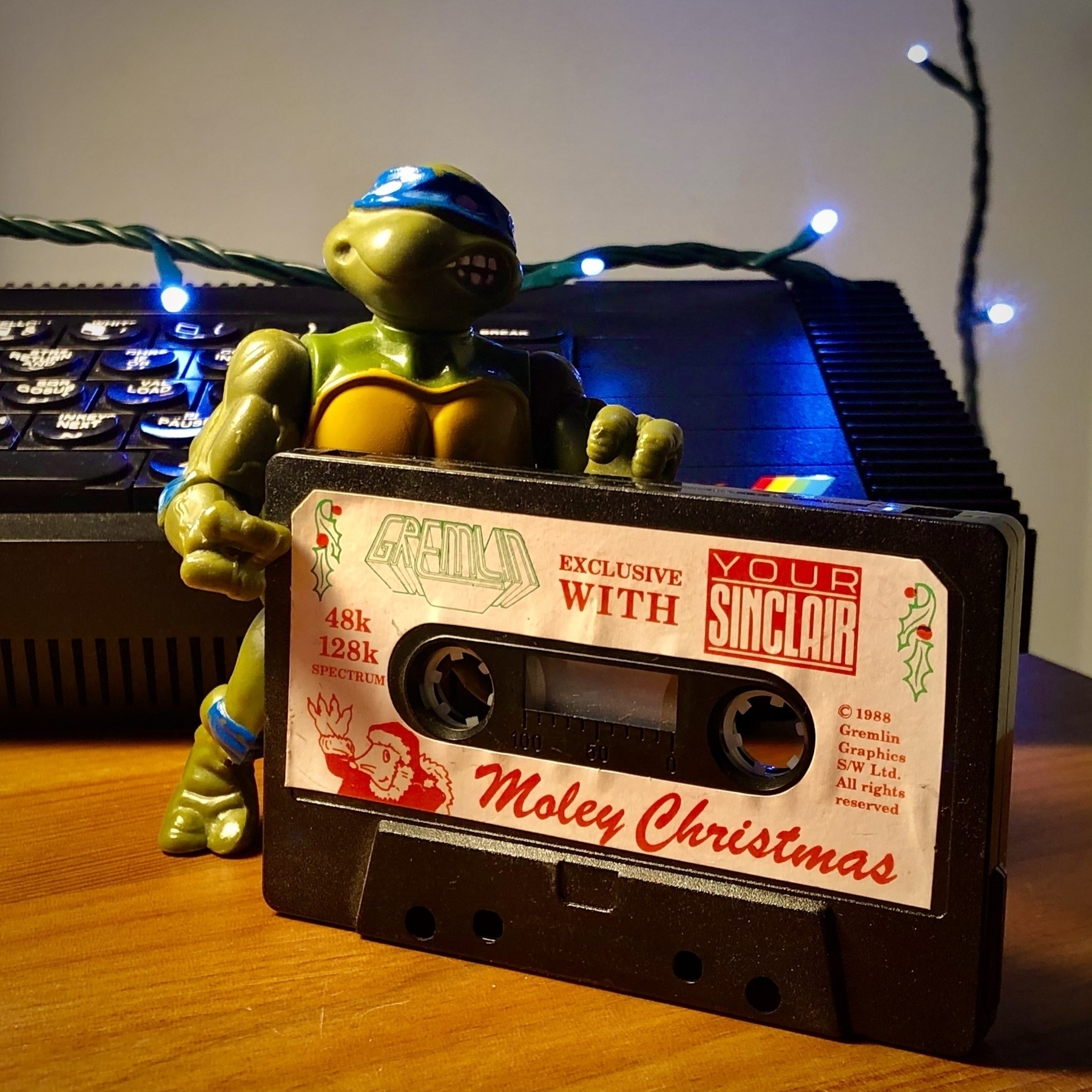
ZX Spectrum Next
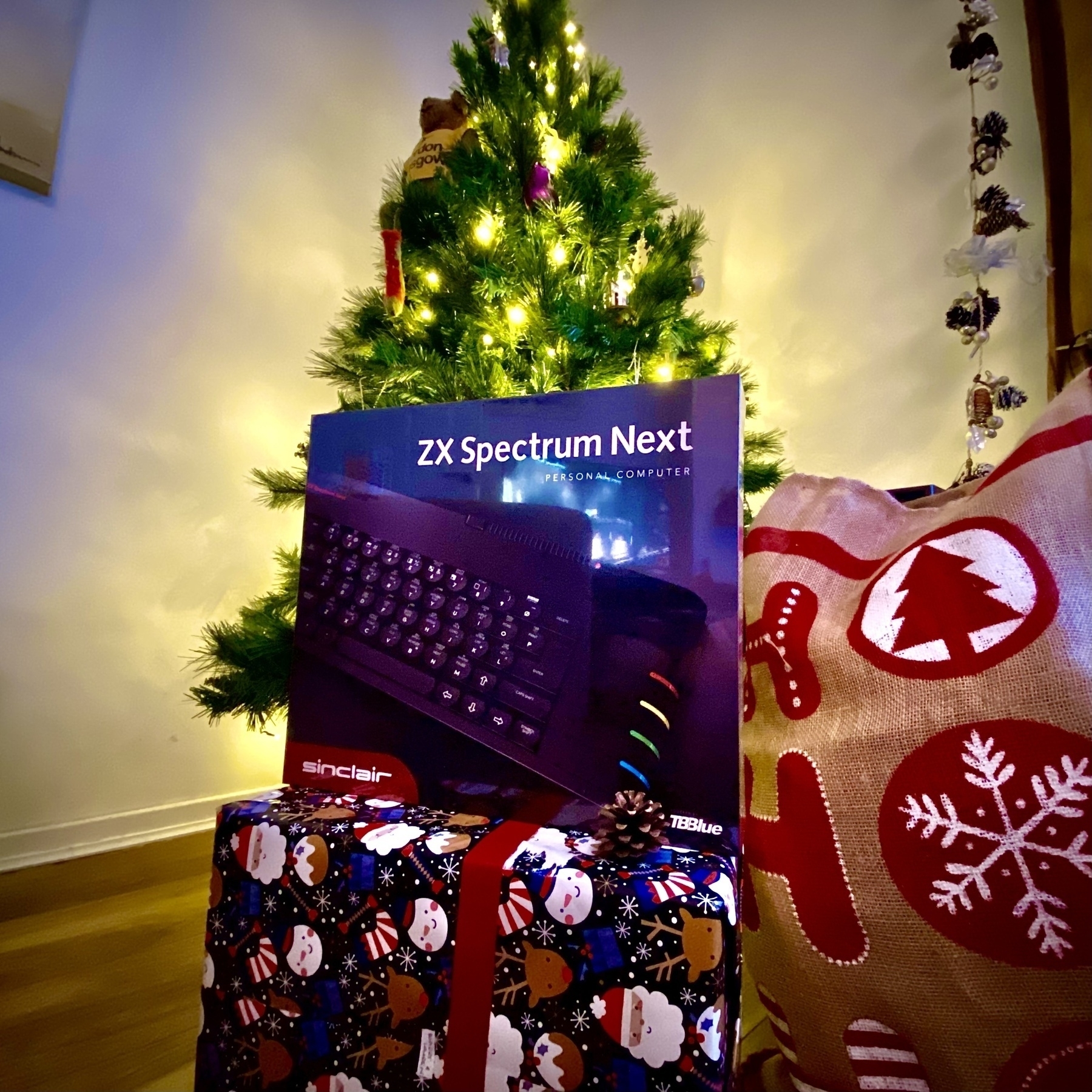
It’s important to stay organised in the hectic modern world of Information Technology.
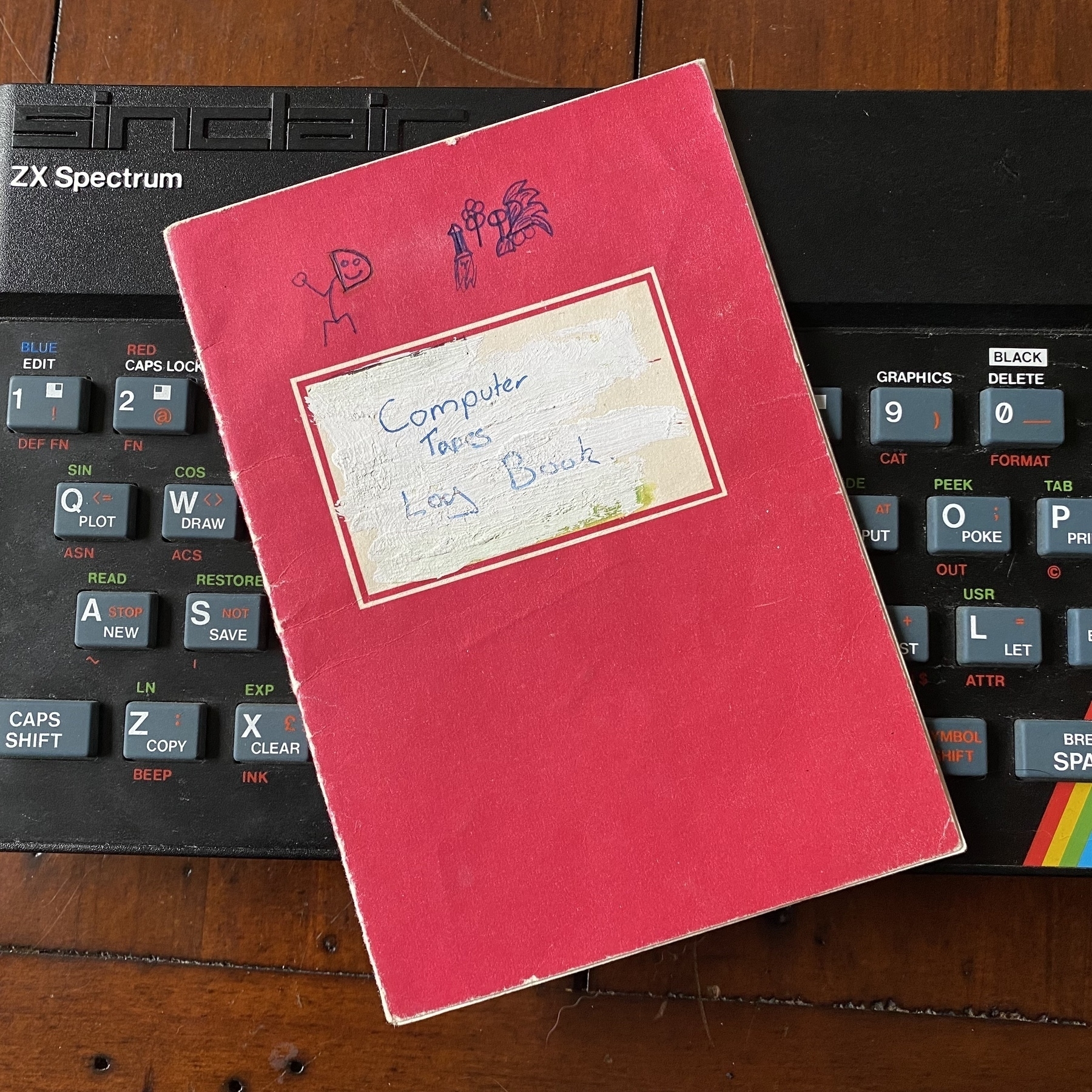
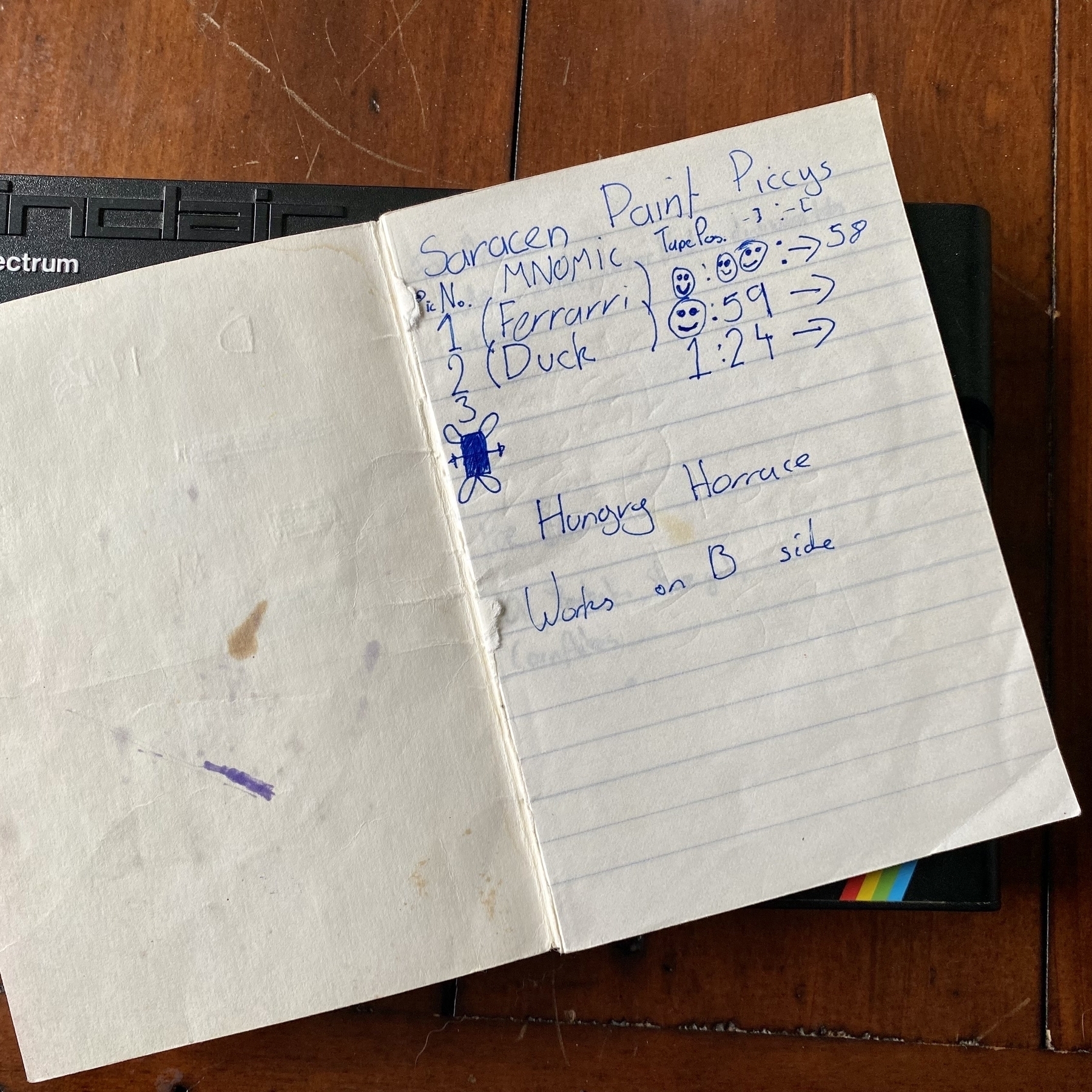
Sunday: upgrading an already-modified (but still with with notoriously bad and unbalanced sound) ZX Spectrum +3 with a stereo modification from ByteDelight. It attaches directly to the AY-3-8912 (separating out the channels) and taps into the gate-array to pick up the classic beeper sound as well.
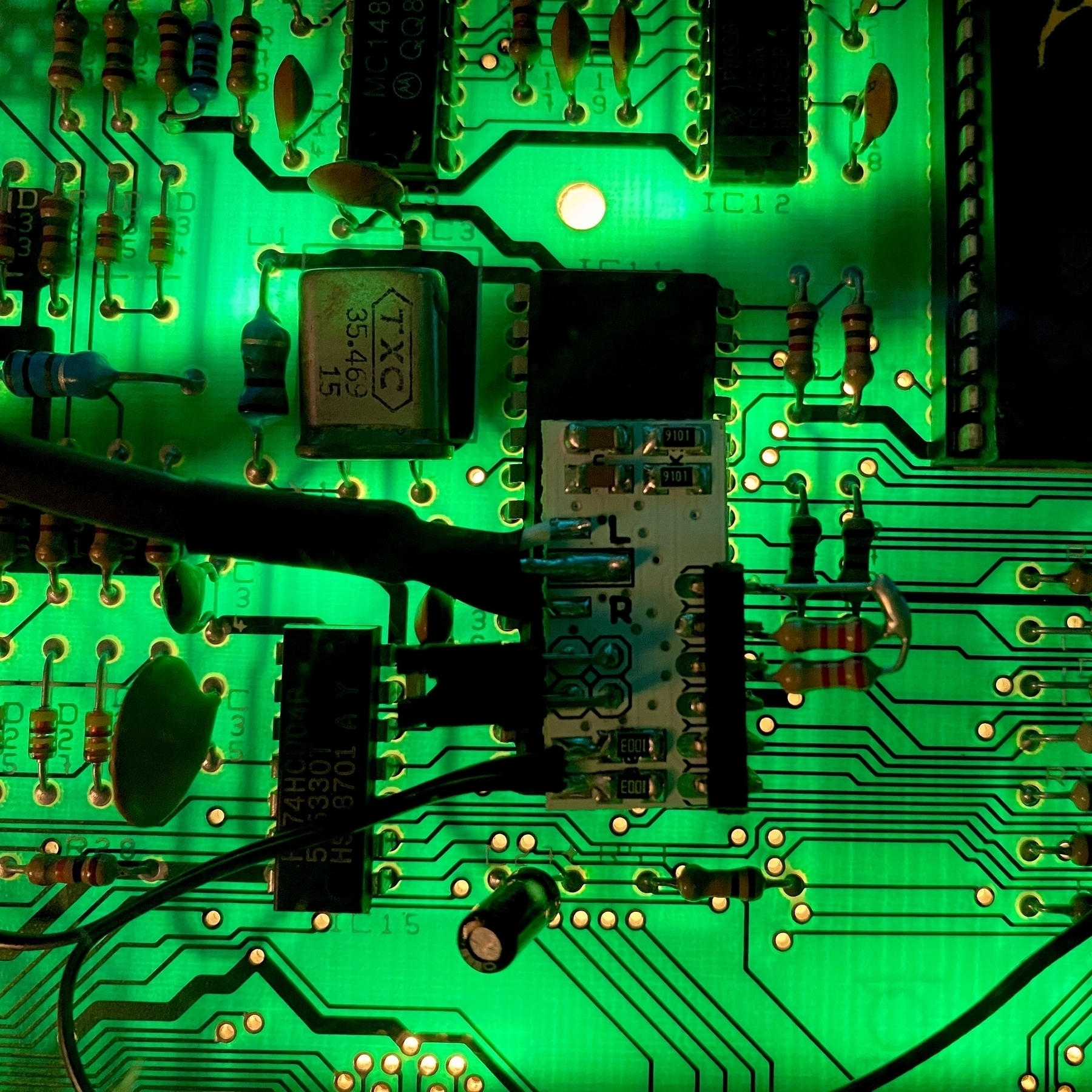
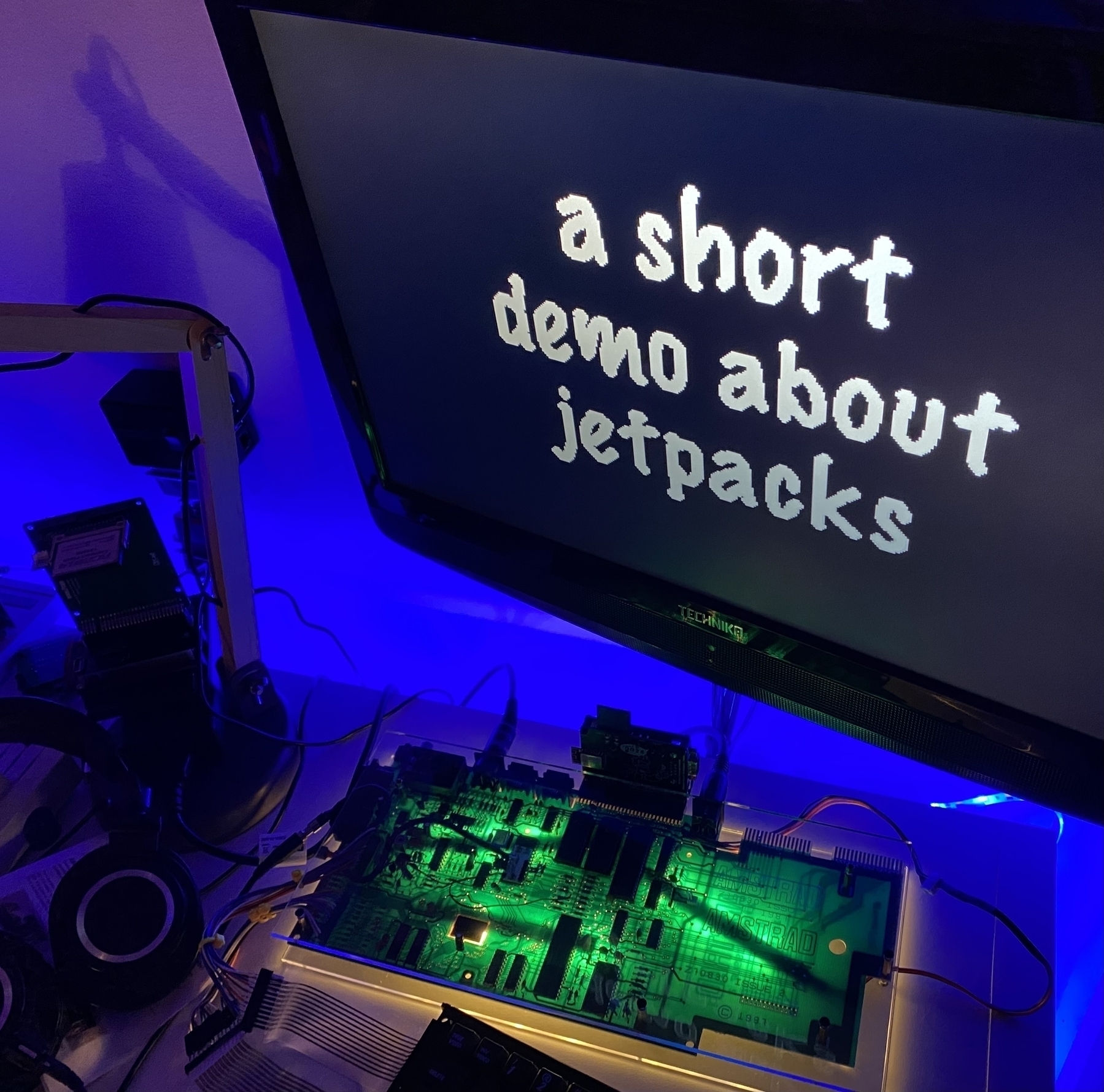
Saturday: time to install a Word Processor onto Hard Disc Drive. (Not to mention the 70,000 word dictionary and a collection of “several” typefaces). #Tasword #zxspectrum #plus3e #yolo
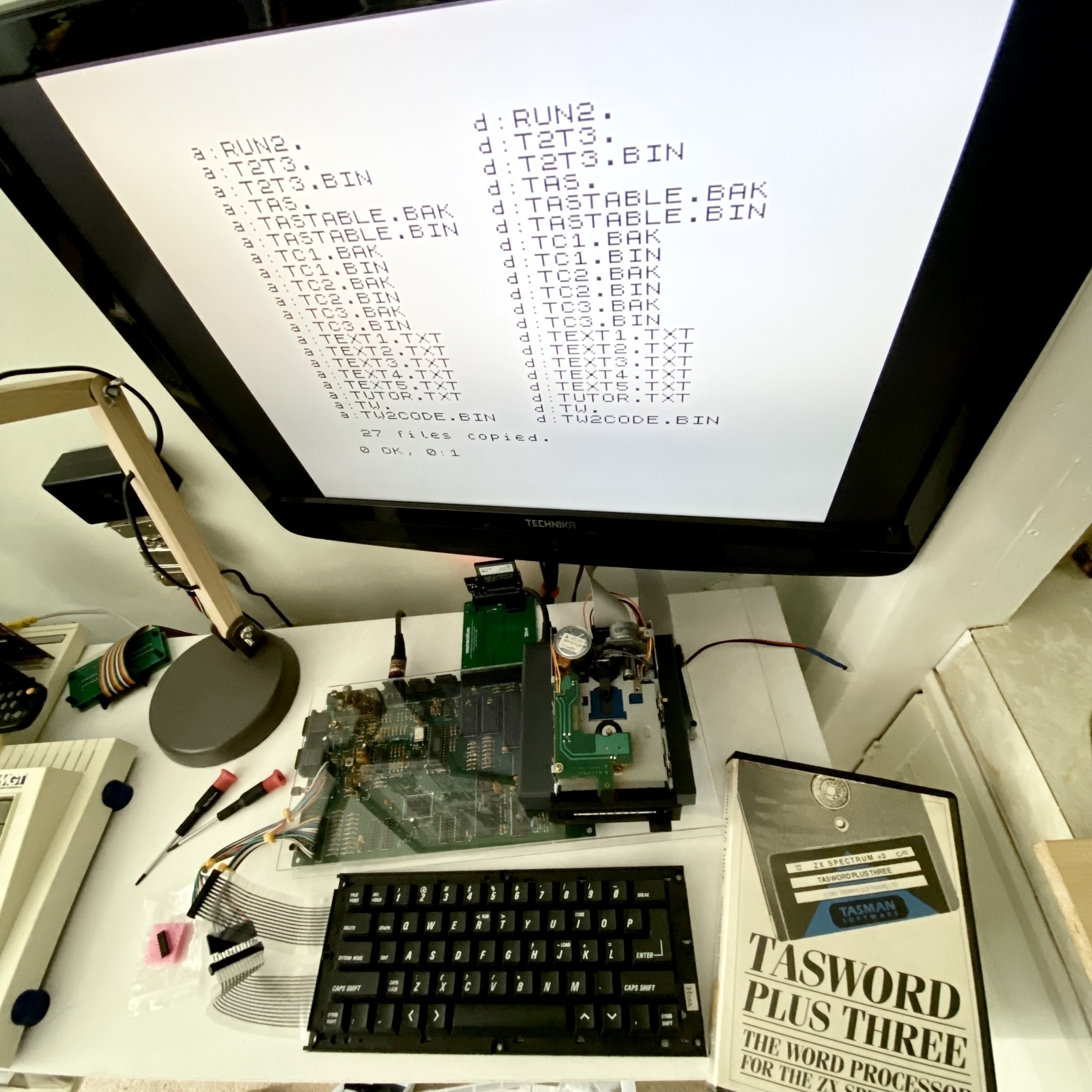
Midnight hackers club. Who wants to write a text scrolly? #ZXSpectrum #specasm #z80

Piña colada / collida detecta (if you’ll indulge me one last #fomo toot xx) #Z80 #ASM
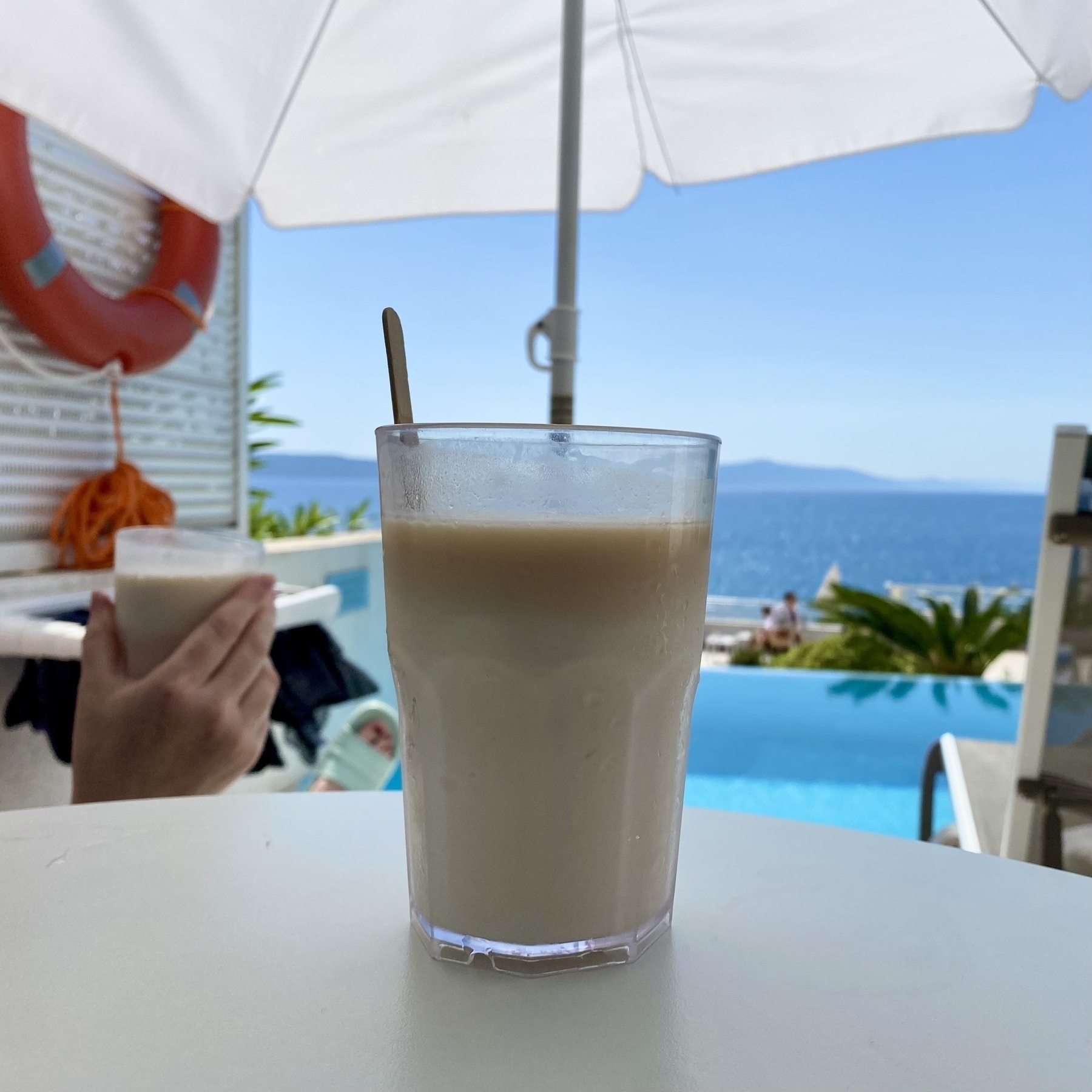
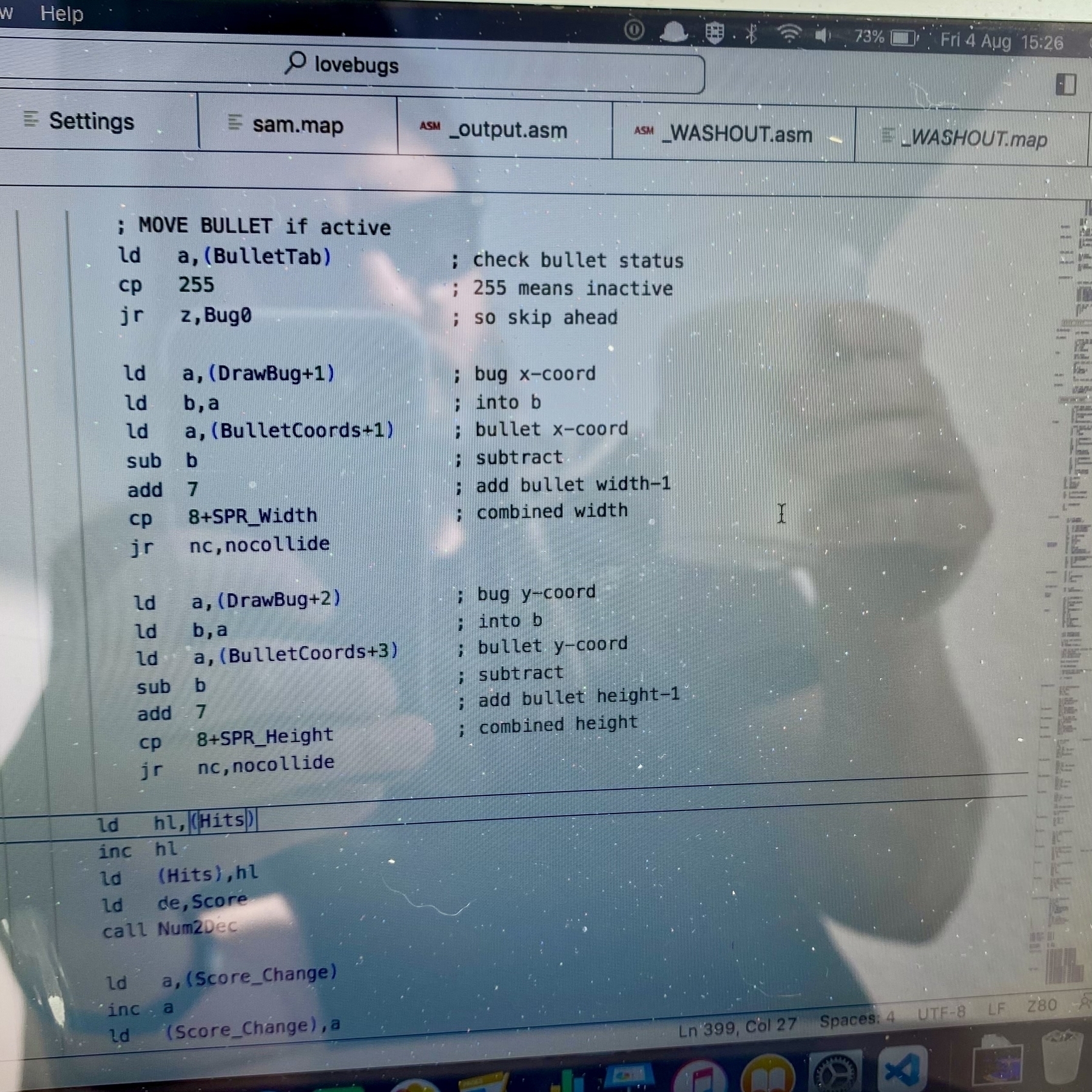
As cool as it’s possible to be in this heat. #SAMCoupé #ZXSpectrum #poolside
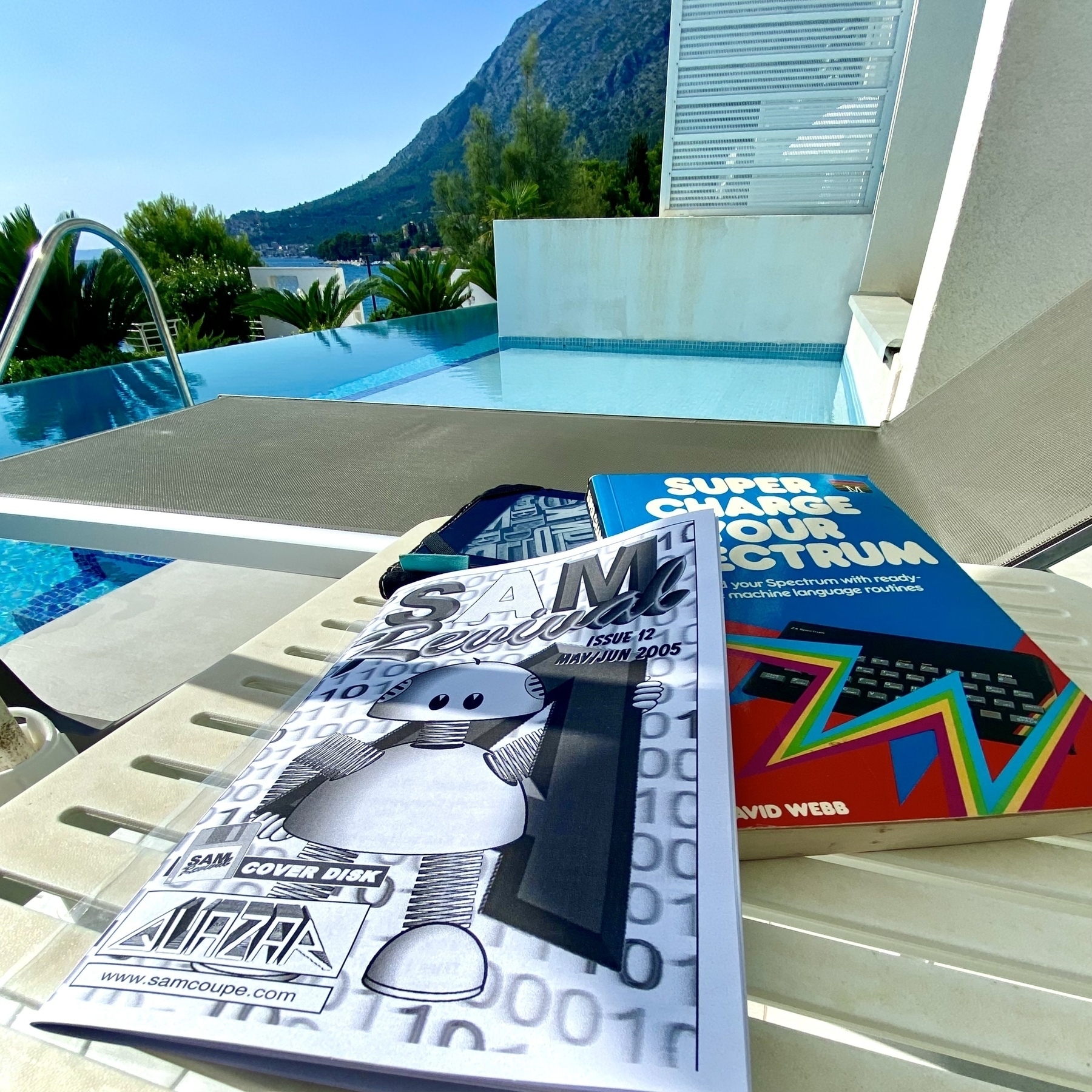
Keep cool at the pool. 😎 📚 ⛱️ #zxspectrum #asm #z80
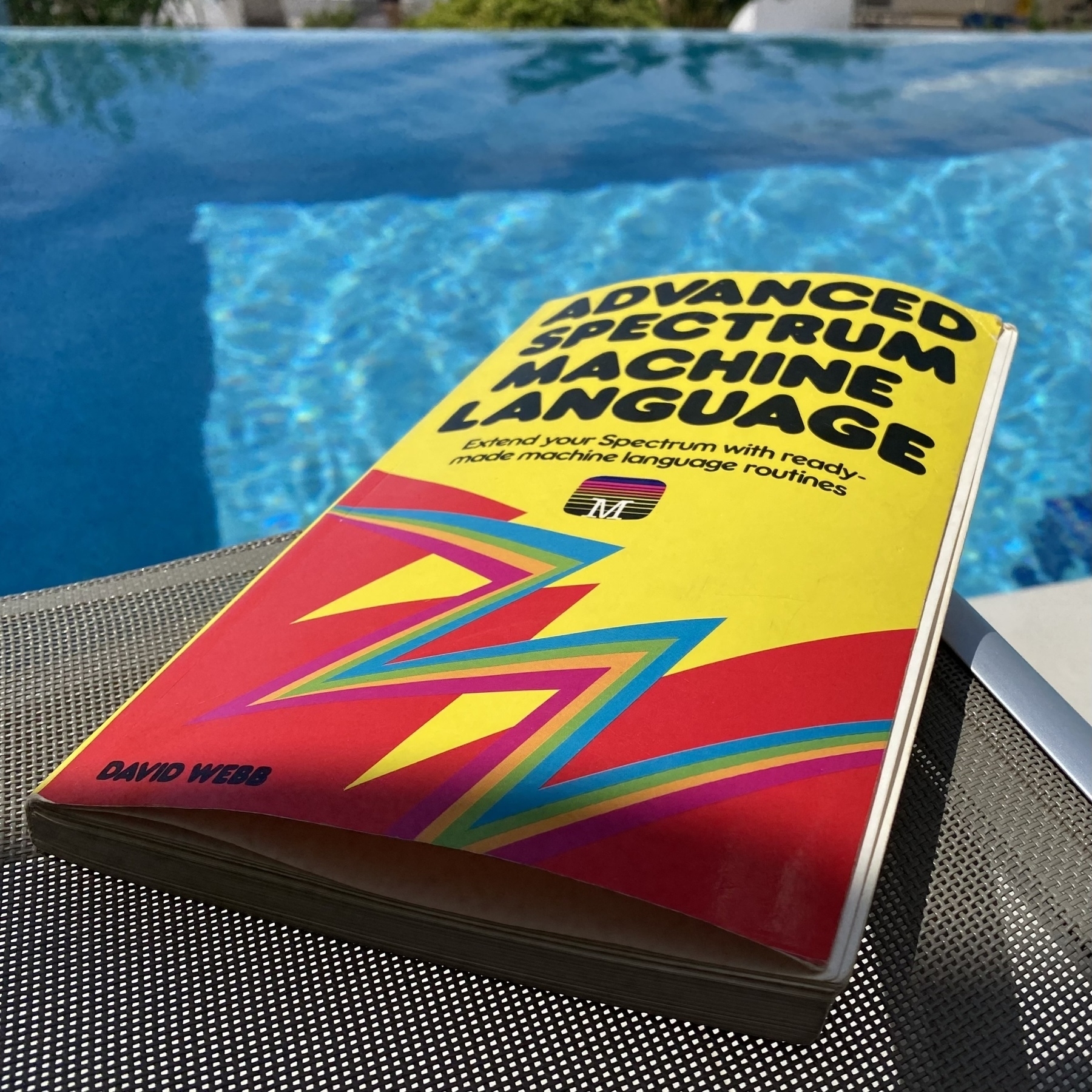
I’m travelling for work today so I’ve brought the laptop, an Amstrad NC100. For on-the-go connectivity all you need is an RC2014 connected via RS232 at 9600 baud.
P.s. don’t zoom in, I’m doing important Business Work™ not playing Zork.
